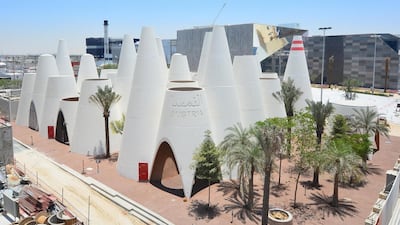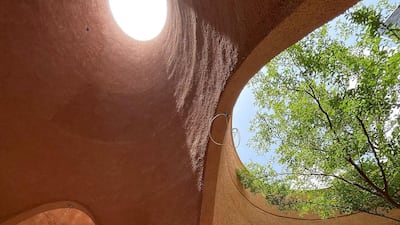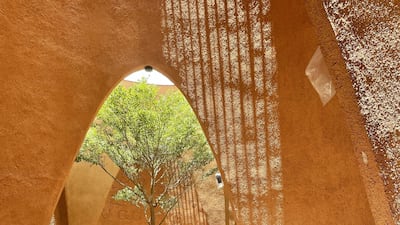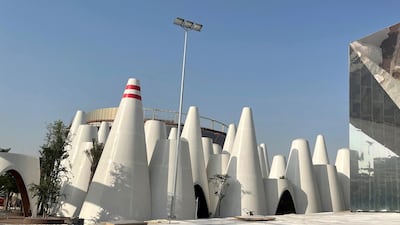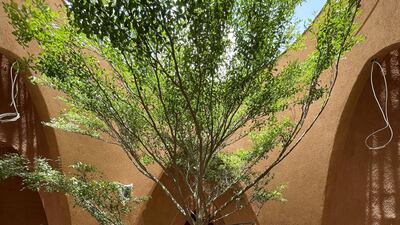Traditional architecture using a mixture of clay and reeds will keep the dozens of unusual cones that make up the Austrian pavilion from heating up during the Expo 2020 Dubai.
The 38 cones are cut off at different heights to create varied light openings, at the Expo site in Dubai South. Their interiors are coated with 9,000-year-old loam – a combination of silt and clay – from Austrian riverbeds.
A layer of reed mats has also been fitted to their reinforced concrete walls. Coated with clay, this helps retain the cool night air and lower the temperature within.
Covered, cave-like walkways link the cones, meaning that visitors will experience pleasant temperatures as they walk around the pavilion site – despite there being no air conditioning in most of it – during the six-month Expo.
The design is also inspired by Arabian wind towers.

Construction work will be completed a month before Expo 2020 Dubai opens in October to protect the digital content inside from the summer heat.
As part of the commitment to sustainability, only a small portion of the pavilion will be air-conditioned – such as areas reserved for workshops that could run involve large delegations and run for several hours.
"Our pavilion is open on the top. There is no cover or roof so it will be just before the Expo starts that the digital content will be added," Richard Bandera, commercial counsellor with the Austrian embassy, told The National on Sunday.
“This was a traditional way of keeping Austrian buildings warm in winter and cool in summer before industrialisation, when people lived near lakes in clay houses.
“The whole building is covered in clay and it gave us naturally coloured brown walls. When you walk inside, you will feel a cosy and homely atmosphere.”
“The clay absorbs the coolness of the night and diffuses this throughout the day. Even in this heat, you can feel the difference," Mr Bandera said.
"From October to March, it will be a fantastic experience.”
The presentations inside aim to surprise visitors through digital animation.
Austrian companies and research groups will display projects on agriculture, water, life sciences, and digital security.
“You can walk from cone to cone, as these are interlinked, and that creates larger and smaller rooms in which we will have animation,” Mr Bandera said.
“In the caves, you will also experience different senses. In one cone you will smell the pine from the furniture made by an Austrian craft school.”
The pavilion budget crept up by 15 per cent from the initial estimate of 16.9 million euros ($20.4m) due to the year's delay caused by the coronavirus pandemic.
Mr Bandera said at least 1,000 Austrian business visitors had expressed an interest in visiting the UAE and the region.
The UAE and Austria have strong economic ties. The UAE is the seventh-largest destination for Austrian foreign direct investment. The six larger destinations are European nations.
“My office has been flooded with requests, not only because of Expo 2020 nearing but because this market is very important between Africa and this region,” he said.
Beatrix Karl, commissioner general of Austria, said the country wanted to position itself as a strong and reliable partner in the Middle East.
“Climate protection and technology go hand-in-hand here and complement each other. The eye-catching sustainably planned pavilion combines traditional construction that is inspired by Arabian wind towers.”
“Austria is known as the country of culture. We also want to add surprising elements to surprise visitors," Ms Karl said.
"The expo offers us a place to position Austria as an innovation leader through digitalisation, innovation, and transformation. It provides a unique opportunity to present our know-how and strength.”
Expo pavilions – in pictures
